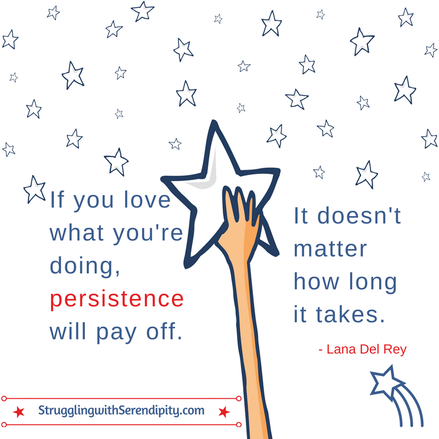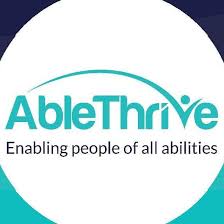|
We prepared for another 12-hour trek. I drove with both of my girls in Maria’s Ford Focus from Tiffin to Cambridge. No hatchback or chair topper. We stuffed the small car to the hilt with Maria’s belongings—plus a wheelchair. Beth sat cramped in the back seat for the all-day drive. We planned to get her out of the car to wheel around or move the contents to give her a different position, but Beth shifted on her own and chose to stay put to get to her dorm faster. We drove directly to Pforzheimer House, where Maria and I camped out in Beth’s suite that night. In the morning, a real estate agent showed us apartments.
Maria would start her new teaching job in less than a week. After viewing several places, Maria decided to rent the second floor of a house near Davis Square in Somerville to avoid the even higher rent in Cambridge. She could move in the next morning. Next, we shopped for a bed. Maria picked one to be delivered the next afternoon. Maria and I slept in Beth’s dorm room one more night. Bright and early the next day, we unloaded the contents of her car into the empty apartment. Maria brought her shopping list for a Target run. We made it back in time for the bed to be delivered. The new box springs wouldn’t fit up the narrow, winding stairway to her apartment. The young delivery guys tried another way. One precariously balanced on the front porch steps and pushed the box springs straight up to the other who leaned over the second-floor balcony. Success. I stayed two more days before flying back to Ohio and treasured the time. I admired Maria’s bravery in moving to an unfamiliar big city with her sister the only person she knew. Next: Another emergency room visit!
8 Comments
(This blog tells my family's story. To see more, click "blog" at the top of this webpage.)
My last weeks in Cambridge as a personal care assistant and Harvard Coop employee ended with easy goodbyes. I loaded the car—twice—with Beth’s backup wheelchair, single futon, lift chair, floor lamp, refrigerator and microwave unit, and more. I labeled everything and pushed my limits by moving the items by myself to the basement storage room at the upperclass house (dorm) where she would live in the fall. Everything hurt after. I scribed for the student with cerebral palsy for the last time as Beth finished her final exams and swam her last practice at Blodgett until September. We watched colorful dragon boats race on the Charles River before I packed the car for the long drive to Ohio. I couldn’t wait to be back home for the summer and planned to appreciate every minute. The upcoming school year, John and I would have an empty nest in Tiffin with Beth at Harvard, Ben in Columbus, and Maria graduating early in December to work in Boston near her sister. I wanted my kids to find their own way in life, but at the same time, I wished they could live with me forever. Feeling sorry for myself sparked a radical idea: moving to the Boston area if John retired in two years, after 30 years of teaching in Ohio. Maybe. Summer vacation officially started with an additional five-hour drive to Chicago for the wedding of Rakhi’s brother. The short drive seemed easy after the trek from Boston. I loved our road trips in Beth’s blue car with CDs and sing alongs. At one of the wedding events, I wore a long blue dress with a tunic top to a beautiful ceremony. At the evening garba, Beth danced in a short sequined top that bared her midriff above a matching ankle-length skirt, a gift made in India from Rakhi’s parents. We found out at the garba that a woman with a bare midriff meant she was looking for love. I never tired of adding to Beth’s contagious laughter. Back in Tiffin, Beth reunited with her best friends, Ellen and Lizzy, not knowing it would be one of their last summers together. Maria gave Beth a special gift, a beautiful sunflower quilted wall hanging that she sewed for a college class on women’s traditions. Last spring, John attended presentations at Heidelberg when the students spoke about their quilts. I wished I could have heard Maria talk about her sister’s favorite flower and the passion for life they shared. When I lived in Cambridge, I also missed hearing my oldest daughter sing at Heidelberg choir concerts. I wouldn’t miss any more of her solos. Seneca Aquatic Klub practices filled Beth’s calendar for her fourth swimming summer. Peggy showed us an underwater video from the previous summer with sloppy strokes. A recent one with smoother movements reinforced Beth’s belief that mastering the forward freestyle stroke was doable. Two teammates lifted her in and out of the pool as they had for high school practices. One morning, they carried her out to the diving board—under protest. Her attempt to enter the water gracefully ended in a belly flop, but she didn’t lose any sleep over her lack of diving skills. Next: Norway! (This blog tells my family's story. To see more, click "blog" at the top of this webpage.)
As 2005 began, Beth and I started the drive back to Massachusetts. John stressed over the snowstorm in our path. I didn’t worry about weather, but I respected it, even more so after I hit an ice patch on the highway through Buffalo and spun full circle across three lanes. I shrieked and steered out of it, suddenly winded. With no cars near us, I stopped for a moment and breathed deeply to counter the tidal wave of feelings that took me back to the earlier accident that injured Beth. Lucky for us, few cars braved the weather. Beth studied for finals and swam with the team for three practices a week at Blodgett, her new favorite pool, with two more practices each week with the assistant coach. Beth called me one morning, exhilarated. Coach Morawski asked her to race at a Harvard home meet for the first time. We ordered the team T-shirt for parents for me, with Beth’s name on the back, and celebrated with Finale desserts in the Square. At her dorm, she showed me a new gift with a big smile: the HWSD team’s warm up jacket and pants. At the early January home meet, I sat in one of the red seats in the section for parents, right above where the team congregated on deck. I proudly wore my shirt, but it wasn’t about me. I was thrilled for Beth. I also met friendly parents, understandably surprised to see me in their section and a girl in a wheelchair warming up on deck with the team. They no doubt would question their daughters after the meet. A full crowd gathered in the upper stands. Beth joined a procession led by the Harvard team captains, chanting in unison all the way. The young women gathered in a circle to wrap up the cheers before warming up on deck. I never thought I would see my daughter with a college swim team. Wearing a coveted Harvard swim cap, Beth wheeled by herself to the far corner of the huge pool and used the chair lift independently to get into the water. She swam under the plastic lane lines easily, no longer a challenge as it was at her first wheelchair games. To begin the 200 free, Beth pushed off the wall with her hands while others dove off the starting blocks. I watched the clock and jotted down the numbers every time she touched the wall. I sat forward in my seat, my excitement growing with each lap. The other girls finished the race and I held my breath as she swam the last lap by herself. I wished John, Maria, and Ben could have been there. Beth’s first race at Blodgett pool set a new short course S3 Paralympic American Record in the 200 free—and in every official distance along the way, the 50 and 100. Three new records in one race! The announcer shared the news with the crowd, and the young women on the Harvard team cheered the loudest. And not for the last time. Next: Blizzard! (This blog tells my family's story. To see more, click "blog" at the top of this webpage.)
It seemed like a good plan. While Beth started her freshman year at Harvard, I would live off-campus for transition support. The summer rushed by and I still needed to find a place to stay. Rundown studio apartments in Cambridge started at about $1,400 a month in 2004, so I decided to rent a room instead. I found a rare bargain several blocks from Harvard: one of two bedrooms in a tiny apartment for $600 a month. I’d share the space with a young woman, a church organist, from Ohio. Small world. Late in August, Beth and her close friends met for breakfast on the day Lizzy left for college. They each chose different schools in three states. Her friends wore rings engraved with the word HOPE, the same one they gave Beth after her injury. The same one she never took off. Ellen and Lizzy had the same week off for spring break and planned to fly to Boston for their first visit to Harvard. They hugged and said teary goodbyes in the Burger King parking lot. I’d miss her friends, too, and their gift of contagious laughter. Beth wasn’t the only one saying sad goodbyes to friends and family. We prepared the best we could for our separate adventures. I anticipated what she would need and made piles along the wall in our dining room. John doubted it would all fit in Beth’s car. He was right, but the items at the top of my list made the cut. I put an old backup wheelchair in the car topper and stuffed pliable bags of towels and sheets around it. I checked my list twice, three times. A reassuring task on the brink of a college experience out of my control. (This blog tells my family's story. To see more, click "blog" at the top of this webpage.)
My last day as manager of a local group home, I finished painting a small room and hugged the residents goodbye, with a promise to visit. What a relief to pass on the responsibility and to know I left everything in good order. As I packed for our girls’ trip to New York City, I couldn’t stop smiling. We crowded into Beth’s car for the eight-hour drive, singing along with popular songs on the radio. After a harrowing drive in Manhattan to the hotel, we left the car in a parking garage and explored on foot and by taxi. By our small town standards, every ride in a yellow taxi was wild, an accident waiting to happen. I secretly bought NYC taxi ornaments for the girls for Christmas gifts. In Central Park, Maria and Ellen lifted Beth into a covered carriage pulled by horses for a ride in the rain. I worried about leaving her wheelchair behind, but it was there when we returned. We enjoyed a ritzy restaurant afterward, the four of us sharing two meals to make it affordable. For dessert, we walked/wheeled to Serendipity, a cafe popularized by a movie of the same name. The steps at the entrance were surmountable, but sadly, we didn’t have enough time to wait for a table before our show. Our first Broadway play, Wicked, with the original cast, drew us in with exquisite detail in the songs, sets, costumes, and story. Unlike anything we had ever seen before. Wowed, we left the theatre with a ‘Popular’ shirt for Maria and one for Beth with her new motto, ‘Defying Gravity.’ On the drive home to Ohio, we sang Wicked songs along with a CD of Indina Menzel and Kristin Chenoweth, belting out my favorite lyric. “Everyone deserves a chance to fly!”  (This blog tells my family's story. To see more, click "blog" at the top of this webpage.) At the end of her junior year of high school, Beth thought about where to apply to college. All teenagers should have that choice, with or without a disability. However, the thought of college with quadriplegia made me anxious and uncertain. I wondered what my role would be. What if she didn’t make the best choice? What was the best choice? On the open road again in a little blue car, Beth and I took turns driving from northwest Ohio to the East Coast. We turned up the volume on John Mayer or mix CD’s she made, and sang along. First stop: Johns Hopkins University in Baltimore. As I pushed Beth up and over a formidable hill on campus, I couldn’t stop myself from stating the obvious: she could not wheel it on her own. She responded that an alternative route, much longer, looked a little easier. We had agreed that I would help during her first year at college, but the logistics were hazy. Our tour guide rambled and I imagined her wheeling alone on the Johns Hopkins campus. She still refused to consider a power chair or power assist wheels. The odds of Beth letting me push her chair through rain and snow? Zero. After we saw the unusual billboard in Seattle (Quadriplegia at Harvard: A+), I looked online and found the young woman pictured on the billboard. Brooke Ellison wrote a book with her mom titled Miracles Happen: One Mother, One Daughter, One Journey. With an injury like Christopher Reeve, Brooke needed a trach to breathe and could not move her arms. She shared her college dorm room with her mom and they moved through all of life’s hours together. Three years after Beth’s injury, I thought I would stay in her college dorm the first year, but I knew our days as a team were numbered. My youngest daughter kept trying to master the time-consuming details of self-care as a C6-7 quad. She worked every day on her biggest goal, complete independence, even though the odds were not in her favor. Encouraged by small victories, Beth never gave up. The third destination of a non-stop summer: Connecticut!  (This blog tells my family's story. To see more, click "blog" at the top of this webpage.) Beth’s second swimming summer began with a twelve hour drive from NW Ohio to Minneapolis for her second USA Swimming Disability Championships. Swimming remained complex and challenging, but she drove through Chicago on congested highways with ease. Our flight to Seattle a year earlier was the only time we had been west of Chicago. Our hotel sat across from the parking lot from the expansive pool complex at the University of Minnesota. The first morning of the meet, we met her coach and teammate at the pool. Beth, sixteen, asked me to stay nearby, since I understood her developing routine with goggles, swim caps, towels, bathroom breaks, positioning, and showering. For me, that meant hovering at a distance on the bleachers until she wanted my help. I didn’t mind. I supported her quest for independence, though none of us knew if more progress on that front was even possible. Waiting to swim, new records set in fast races intimidated her. Expectations soared along with nerves. As Beth predicted one year earlier, she qualified for finals. Her previous national meet remained the only one where she had not. Despite the achievement of finals cuts, her morning races were sluggish, followed by discouraging finals times. After another dawdling race on the second morning, Beth’s frustration grew. The only S3 woman at the meet, she would win each race, a fact she did not appreciate. She wanted to achieve swim times close to her best ones—or faster. Immediately after the second morning’s races, time trials allowed swimmers to clock official times in events of his or her choosing. I made a rare request to her coach. I asked him to sign her up for a time trial in the 200 back. Three years after her injury, Beth earned her first official Paralympic American Record in the S3 classification for the 200-meter backstroke. We both knew it was the easiest record to beat, but I reminded her that just a year earlier, she wasn’t strong enough to swim nonstop for 200 meters. As I anticipated, the success tempered her disappointment with other races. We tumbled into the predictable schedule of a three day meet for swimmers who qualified for finals: wake up, warm up, race, cool down, eat, recover, rest, and repeat. And phone calls to John, Ben, Maria, and Peggy. The last day of the meet, after prelims, we strayed from the routine to visit the Mall of America. Beth let me push her wheelchair, a rare occurrence, to preserve her strength for finals. That evening, we laughed with her coach after she swam her fastest race of the meet after shopping. Even so, her resolve to work harder magnified. “Once I realized I was good in the water,” she said, “I trained really hard and put a lot of focus and effort into it, because it was this new avenue for me. I hadn’t thought I could be an athlete anymore.” After Minneapolis, Beth set ambitious new goals. In addition to mastering the forward freestyle, far from being attained, she aimed higher for the ultimate American Record in the 50 meter freestyle, by far the most difficult S3 record to beat. The second destination of a non-stop summer: Maryland!  (This blog tells my family's story. To see more, click "blog" at the top of this webpage.) Beth led us to unexpected places after her spinal cord injury. “I always knew I was just going to get stronger and get back to my life as soon as possible,” she said. On May 10th, Beth drove us in her little blue car to the Michigan Wheelchair Games. Three years had passed since her injury and one year since her first swim meet in the same 25-yard pool. She competed using the forward freestyle stroke for the first time. Not a smooth endeavor and quite a bit slower than her backstroke. She dropped 30 seconds off of her 50 back race compared to her time one year before. I drove home from Michigan so Beth could rest. But first, she sang and danced in the passenger seat to her favorite John Mayer song. “I am invincible, as long as I’m alive!” Déjà vu. I loved our road trips. One week later, we attended the Ohio Wheelchair Games. Two weeks after that, Beth competed in Bowling Green at her first outdoor meet. She accepted my help to wheel over the grass to GTAC’s team camp. Her friend on the team was not in sight, so she picked a spot out of the way. She liked being outside and rarely complained about the heat. Hot weather raised her body temperature and I monitored it with a forehead gauge. She claimed to sweat a little, but I never saw it. Beth alternated her arms for the 100-meter backstroke instead of the double-arm technique, while the other swimmers in her heat swam a 200-meter event so she wouldn’t have to finish the race alone. Her swim times varied more from meet to meet than they did for her able-bodied teammates. She unexpectedly swam her fastest times by far in the 50-meter traditional forward freestyle race. She touched the wall at one minute and 28 seconds, still 15 long seconds away from the most difficult American Record in her S3 classification. I suspected that the swim parents with stopwatches fudged (improved) her time a little. Maria graduated from high school with honors in late May. We hosted a big graduation party on our backyard deck with John’s flowers and walkways providing a colorful backdrop. Maria chose to attend Tiffin’s Heidelberg College to major in education and take advantage of their acclaimed music program. She had intended to be a teacher ever since she toddled into her dad’s classroom. Since her sister’s injury, she decided to teach young children with a disability. She would be a passionate advocate for her future students. Always on the go, Maria babysat often, worked at a video store, took voice lessons, and performed in community theater. I loved her energy and enthusiasm. We all lived in the same house, but some evenings I didn’t see her. We met at Taco Bell sometimes to catch up over burritos and fountain drinks. Meanwhile, Beth made big plans for a summer to remember.  (This blog tells my family's story. To see more, click "blog" at the top of this webpage.) Beth, 16, passed her driving test on a cold autumn day. Comfortable behind the wheel of her little blue car, she held a knob on the easy-turn steering wheel with her right hand. Her left hand pushed or pulled a bar to accelerate or brake. Driving was fun, but not getting in and out of the car by herself. She didn’t want to use a sliding board. She scooted to the far right edge of the chair cushion and put one hand on the driver’s seat and the other on the chair cushion. The goal was to lift her trunk high enough with her arms to bridge the gap. A far-off goal, but Beth still kept trying. Every time. I stood right behind her and intervened with a boost so she wouldn’t fall. I quickly learned that the belt loops of her jeans ripped easily, so I grabbed the side of her jeans instead to lift her over the gap. When Beth was with others, some still helped by grabbing the belt loops. At first, I sewed up rips and the holes they left. But when they just ripped again, I gave up. At that time, her shirts covered the holes. Just like the bottom of her jeans always hid her socks. Important things for my usually easy-going 16 year old. ;-) Another driving problem: the empty wheelchair after she was in the drivers seat. Beth liked the idea of taking off the wheels of the chair and lifting the pieces across her body to the passenger seat. Unfortunately, it wasn’t practical between the high back of her chair and her strength. The mechanized topper on her car had seemed like the solution. However, the wheelchair needed to be folded and positioned properly on the hook. Plus, the topper was temperamental. When Beth pushed the toggle switch on the remote control to raise the wheelchair, it did not always fall in place at the top properly. Which meant that the car would not start. She resigned herself to the fact that driving would not be a completely independent activity. Even so, she had no regrets about her decision to drive a car instead of a van with a lift. Beth always made time for friends. On the November opening day of the second Harry Potter movie, The Chamber of Secrets, she talked me into letting her drive with no one else in the car while she picked up her best friends. I put her wheelchair in the hatchback without taking it apart. The chair was out of her reach, but I made sure that her cell phone was charged and close by. I was on call but not needed until after the movie when she pulled in the driveway by herself. About five months after our Seattle trip, Beth surprised me by achieving the impossible... |
Cindy KolbeSign up for my Just Keep Swimming Newsletter by typing your email address in the box. Thanks!Categories
All
Archives
November 2022
|






 RSS Feed
RSS Feed











